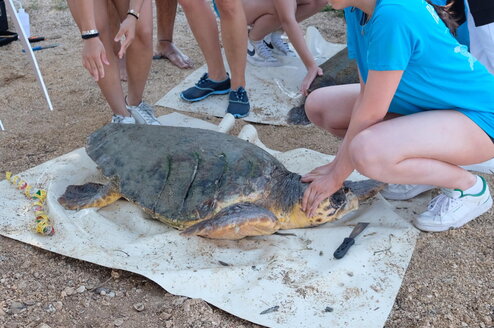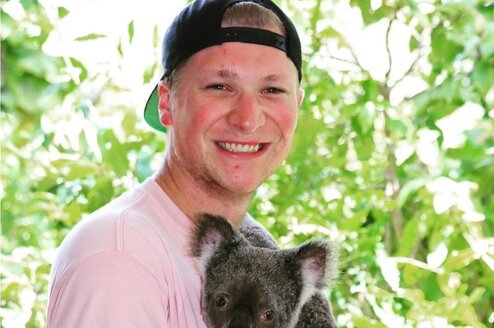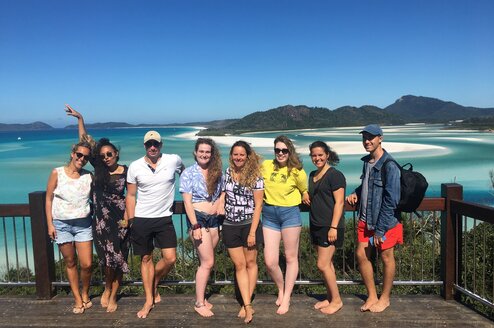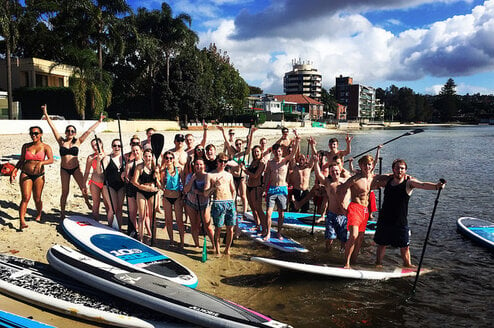High School Volunteer Abroad in Australia
High School Volunteer Abroad Programs in Australia
About
“We’re not here for a long time, we’re here for a good time.” While Australia is famous for many things – koala bears, ACDC, the Sydney Olympics – its youthful, passionate attitude toward life has inspired an international reputation. Aussies believe you’re never too young or old to explore the world, so high school volunteers will be welcomed to the country with a firm handshake and a hearty “Good on ya!”
This massive island is a melting pot of cultures and peoples: indigenous Aboriginals, Asian immigrants, Polynesian Islanders and Middle Eastern refugees. Originally settled as a penal colony for British convicts, Australia’s modern patriotism is shared by both third-generation Europeans and new arrivals. Volunteer opportunities here are as diverse as the population, covering everything from community development to environmental conservation. And, in true Down Under style, the experiences you’ll have are considered just as valuable as the work you’ll do.
Program Types
Due to Australia’s remote location, the journey here can take 12-24 hours. After such a long time in the air, your legs will need a good stretch: plan to spend at least 2-3 weeks with a volunteer program. Though the country is big – roughly the size of the continental United States – the population is small, and helping hands are required in every location and field. Because Aussies are keen to show off their unique island home, most programs incorporate a mix of educational opportunities and outdoor adventures, such as surfing, bushwalking and snorkeling.
Conservation programs:
Indigenous species account for 10% of the world’s biodiversity, and Aussies learn early-on to protect and care for their surroundings. While climate change is one of the biggest threats to conservation, imported animals are also wrecking havoc on the native landscape. Volunteers will be based in national park lands, zoos and conservation areas. Expect to get your hands dirt with outdoor work, such as planting trees, counting eggs or measuring bush growth. A few hours of daily physical labor are balanced with informational sessions and leisurely environmental exploration.
Volunteer and travel programs:
Australia’s landscape is dramatic and varied. Off the northeast coast of Queensland, brilliant colors cover the sea floor in the Great Barrier Reef; out west, red dirt and scrub stretches for hundreds of kilometers. There’s a lot of ground to cover, and this type of program allows volunteers to participate in service projects in more than one distinct location. Emphasis is placed on brief experiences for an all-rounded Aussie overview. Fast-paced and active, an itinerary may stretch from Australia’s top to its bottom, with short stays and one or two-day volunteer activities in any location.
Service learning programs:
Blending both short-term travel and longer-term volunteer experiences, these programs offer theme-specific itineraries with matching educational agendas. Volunteers interested in sea life will study marine conservation and help out in several beach locations. Students curious about Aboriginal development will learn about native culture and assist with community support initiatives in several indigenous centers. Days are spent learning about a particular subject, then applying this knowledge directly in service projects.
Planning Your Trip
When and Where to Volunteer Abroad
Seasons flip below the equator. When Christmas break appears on the calendar for North American students, Australians are unpacking summer clothing and lighting up the barbecues. From October - March, northern regions experience “The Wet”, a period of heavy rain and tropical storms. During this time, more volunteer opportunities can be found in the states of Victoria and New South Wales, and the southern regions of Western Australia. Once cold weather comes in April, snow settles in Tasmania and volunteers may prefer the persistent sunshine up north. But the country runs on a can-do, survivalist attitude, and volunteers will find themselves well looked after in any weather.
Resources for Parents
Australia is arguably one of the safest countries in the Western world – if you avoid its many poisonous snakes, spiders and lizards! Volunteer programs that place students in Outback environments will take all necessary safety precautions; however, it doesn’t hurt to make sure your immunizations and vaccinations are up to date, before you arrive. Health insurance is essential. Like all things in Australia, medical standards are as high as the costs of medical coverage.
Should any emergency arise – or, if you simply want to let your parents know about the whale shark you swam with yesterday – most areas have efficient mobile coverage and internet access. Even in remote locations, where phone signals are weak, guides will have access to some form of communication.
Financial Costs
Due to the high standards of living, Australia’s volunteer programs tend to be more expensive than others. In-country costs – food, accommodation, domestic transportation and activities – are usually covered by program fees, at $1,200+ per week. Actually reaching Australia can add an easy $1,000, or more, in round-trip plane tickets.
Australian-granted scholarships are more often provided for citizens of other British Commonwealth countries. However, Americans can seek financial support through local or state-wide Rotary Club chapters, which offer assorted scholarships for high school students studying and volunteering abroad. As amounts and regulations vary, contact your nearest Rotary Club for more information.

















